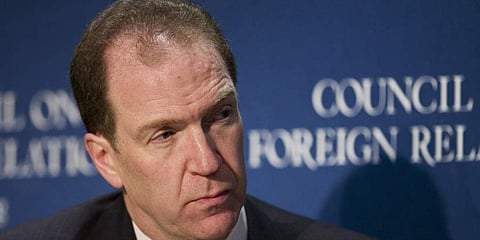

WASHINGTON: Describing the current coronavirus situation in India as "very difficult", World Bank President David Malpass said on Tuesday that the country had made progress in COVID-19 response before it was hit hard by the second wave of the pandemic.
In April and May, India struggled with the second wave of the COVID-19 pandemic with more than 3,00,000 daily new cases. Hospitals were reeling under a shortage of medical oxygen and beds. In mid-May, new coronavirus cases in India hit a record daily high with 4,12,262 new infections.
"This is a very difficult situation for India. India had made progress on the COVID response and then had a very, very big second wave that caused deaths and also a renewed lockdown of the economy which is hitting the economy," Malpass told reporters during a conference call on the occasion of release of the latest edition of the Global Economic Prospects.
"We mourn the loss of life. India has been hit hard. As far as getting the economy back on schedule, India has major vaccine production capabilities through its own internal production, that's being deployed quickly. That will begin to have an impact on the number of cases, and that I think is already having a positive impact," Malpass said in response to a question.
Ayhan Kose, World Bank Prospects Group Director, said that the report has projected a growth rate of 8.3 per cent for India for 2021. "And relative to our January forecast, actually, that's an upgrade (of 2.9 per cent)," he said.
Before the major wave of COVID-19, he said, the Indian economy's recovery was strong. "Now, slowly, the pandemic is under control. And we are expecting the economy, gradually go back to normal and mobility indicators also to normalise especially in big cities," Kose said.
India is the largest programme of the World Bank, and it expanded rapidly in the last year. There is continued expansion of World Bank support plans, planned in the near future as well. This includes both health and infrastructure issues as well. Economic activity in the region is projected to expand by 6.8 per cent in 2021 and 6.8 per cent in 2022.
The World Bank in its report said that in South Asia, India's recovery is being hampered by the largest outbreak of any country since the beginning of the pandemic. The World Bank said, for India, GDP in fiscal year 2021/22, starting April 2021, is expected to expand 8.3 per cent.
Activity will benefit from policy support, including higher spending on infrastructure, rural development and health, and a stronger-than expected recovery in services and manufacturing.
Although the forecast has been revised up by 2.9 percentage points, this masks significant expected economic damage from an enormous second COVID-19 wave and localised mobility restrictions since March 2021. Activity is expected to follow the same, yet less pronounced, collapse and recovery seen during the first wave, it said.
"The pandemic will undermine consumption and investment as confidence remains depressed and balance sheets damaged. Growth in FY2022/23 is expected to slow to 7.5 per cent reflecting lingering impacts of COVID-19 on household, corporate and bank balance sheets; possibly low levels of consumer confidence; and heightened uncertainty on job and income prospects," the Bank said.